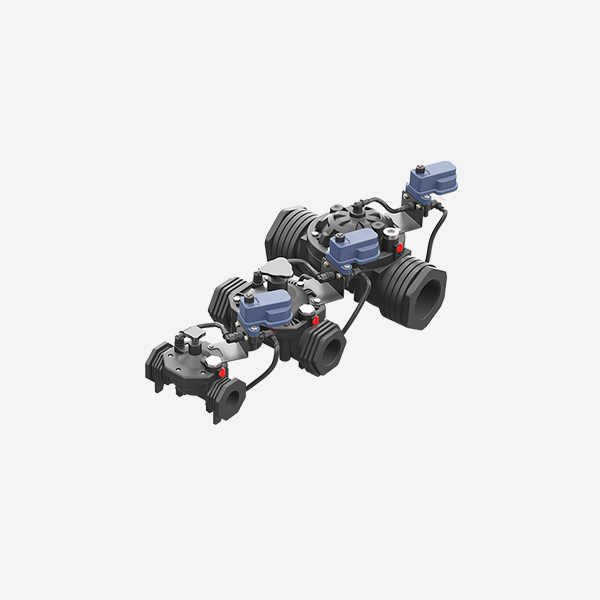Solenoid valves for irrigation
A irrigation solenoid valve is an electrically controlled valve to regulate the flow of water. By applying a voltage over the coil, the valve opens and the liquid can flow through. Solenoid valves are also called electromagnetic valve, water valve, electric valve or electro valve. The solenoid valves from JXCT are specially designed for irrigation. They have a robust construction and are optionally equipped with manual flow control, so the desired flow can be adjusted. Most models have an override function, the valve can be opened manually if needed.

Operating principle of a irrigation solenoid valve
There is a number of solenoid valves with different types of operating principles, such as direct operated, semi-direct operated and indirect operated. (Semi)-direct operated valves operate from 0 bar pressure, while indirect operated valves require a minimum pressure for proper operation. Please note that the solenoid valves from the ST-IA series are indirect controlled. This means that these valves make use of the supply pressure for opening and closing of the valve membrane. This allows a small coil to operate a large flow of water. With this principle of operation, it is necessary that there is always a minimum pressure of at least 0.5 bar in the supply pipe. This is not a problem if the valve is connected to mains water or a pump, but if a unpressurized supply tank is used, the pressure can be too low to properly open and close the valve. In this situation, a semi-direct operated solenoid valve (such as the DF-SA series), or an electric ball valve is a better choice. Ball valves are less sensitive to dirt, consume less electric power, but have a higher price and need to be installed in a dry place. A pressure gauge is placed to monitor the pressure in the system, to learn more about this read our article on pressure gauges for water applications.
Clean water
Water irrigation solenoid valves operate properly with clean water. When the water is dirty, the valve can easily become clogged, resulting in possible leakage or unreliable operation. Moreover, the lifetime may be reduced due to increased wear. To avoid this, a filter needs to be installed at the supply side (for particles < 500µm). Alternatively, an electric ball valve can be used, they have a more robust construction and are therefore less sensitive to dirt.
Installing a water irrigation solenoid valve
Automatic irrigation saves time and water.
It is important to irrigate a garden regularly and consistently. This requires discipline and costs time. Thats why many people use automatic irrigation systems. This has some clear advantages:
Irrigation system operates when you are not at home.
Less evaporation, since there is irrigation before sunrise.
Irrigation saves time.
With a rain sensor there is no unnecessary irrigation.
Generally, the garden is in a better condition by careful irrigation.
Most irrigation systems operate with a main supply pipe that branches to different zones. The zones should be determined based on the required water capacity, location and type of vegetation. Each zone or area is provided with a solenoid valve. The solenoid valves are mounted on a central location or in valve boxes, so they are protected and out of sight. Besides the water supply pipes, a control cable is required.
Each solenoid valve is connected to the irrigation controller. In this way, each zone can be controlled. Theirrigation controller can be programmed with a sprinkling schedule. If being used in a more remote or water sensitive area with a water tank, a float switch is often used to monitor the water level and trigger the controller/valve.